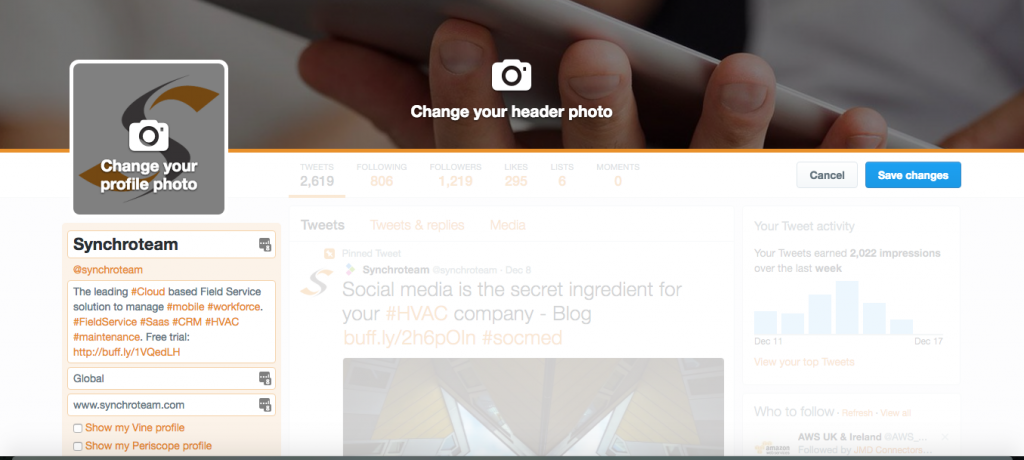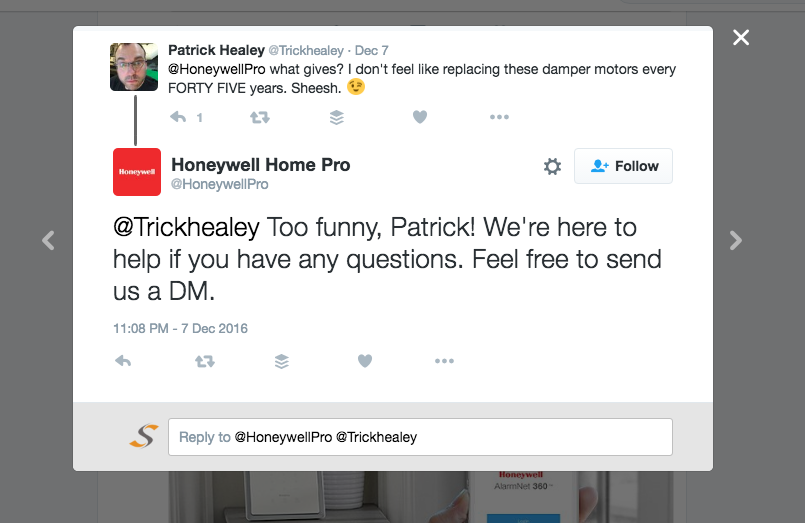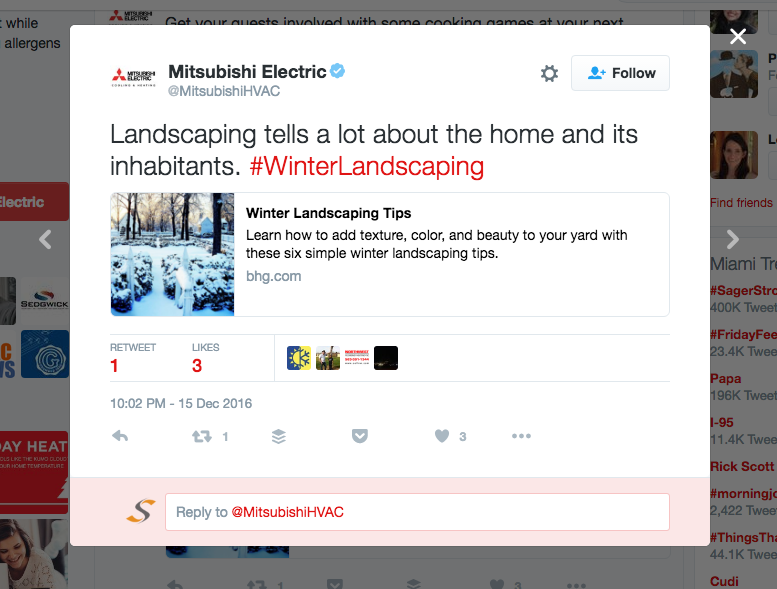Last week, we took an in-depth look at the pros and cons of using social media for your service business. This week, we’re taking a look at one of the largest, most useful but often neglected social networks – Twitter for HVAC professionals!
Twitter for service businesses offers a swift, public way to deal with customer queries, complaints, and feedback. The biggest input in managing a Twitter account is time because having an account itself is free.
Managing Expectations
Before setting up a Twitter account, if you haven’t already, ‘park’ or reserve your company name on Twitter. Populate the account with your logo, and fill up your profile details with your contact information. Make sure to include your telephone number, email address, website, and not forgetting your service/opening hours. You’d be surprised how many companies don’t include this essential information!

Having the right information that is easily accessible to customers will reduce the number of queries that your Twitter account user will need to handle. For some customers, having all of these contact details in the one place will answer any of the possible questions a client would have.
Management Policy and Customer Support
Agree on a Twitter management policy with your staff. The majority of people expect a response from a Twitter query within 2 hours, and this means you’ll need to designate a staff member to check your account mentions on a regular basis during the working day.
Remember, as we detailed in our previous blog post, the public status of the responses means that when you offer excellent customer service, the whole world will know about it. Obviously, that goes for bad customer service too, so respond carefully!

Honeywell Pro on Twitter does this extremely well by diffusing any negative customer experience immediately, then offering to assist customers via DM (direct message).
Customer feedback can be both positive and negative. Twitter settings mean that you can like (by clicking the heart) or retweet comments that are positive.
Why not invite comments from customers such as endorsements for your service or ask them for their feedback? Asking for public feedback is a very powerful tool and more engagement on Twitter makes your account more visible to potential customers.
Retweet this article and we’ll give you a shout-out in thanks!
Create New Ways To Interact With Your Customers On Twitter
If you have a website or blog where you share your policies or methods to offer solutions to a customer, why not share these statements on Twitter? Also use your account to share the real faces behind your company by sharing photographs of your staff at work.
Using spoof accounts such as Bad Plumbing to show how a job shouldn’t be done and use it to spark a conversation with your followers. Humor is a powerful tool to show off your human side on social media!
Twitter for HVAC as a Promotional Tool
Not only can you share your own offers, website, and promote your company on Twitter, but you can also engage with your followers. Do this by sharing content from other sites and users. Mitsubishi Electric HVAC does this extremely well and has accumulated over 50,000 followers on their Twitter account by providing interesting and engaging content that people want to read.

Twitter Ads
Even though a Twitter account, and using it, are free, you can buy advertising on the platform. Like all paid advertising, however, it’s not as easy as it seems and not something you should approach lightly. In fact, Don Lafferty, a HVAC marketer and co-founder of Comfort Media Group (and Don heads up their Twitter account, which we’re big fans of!), even goes as far as to say:
“Unless you are an industry thought leader with a publishing, speaking and teaching component to your HVAC career, do not, I repeat, do not allocate marketing budget to Twitter.
Other social media channels such as Facebook and Instagram give you much more bang for your B2C lead gen buck.”
Don’t say we didn’t warn you!
How Often Should You Tweet?
You could restrict your use of Twitter to only responding to customers, but it’s good policy to post on the platform at least three times a day. This ensures that even the passing customer or prospective customer can see that you are available to engage with them. A good rule of thumb is that material that’s self-promotional should make up about 30% of what you post. Everything else should be of general interest to your ideal customers.
Use scheduling software to publish your content on a regular basis while you’re not at your desk to save on time. Software applications such as Tweetdeck, Hootsuite, and Buffer all work extremely well on Twitter and if you want to, you can also plug in your other social media networks and manage everything from the one location.




